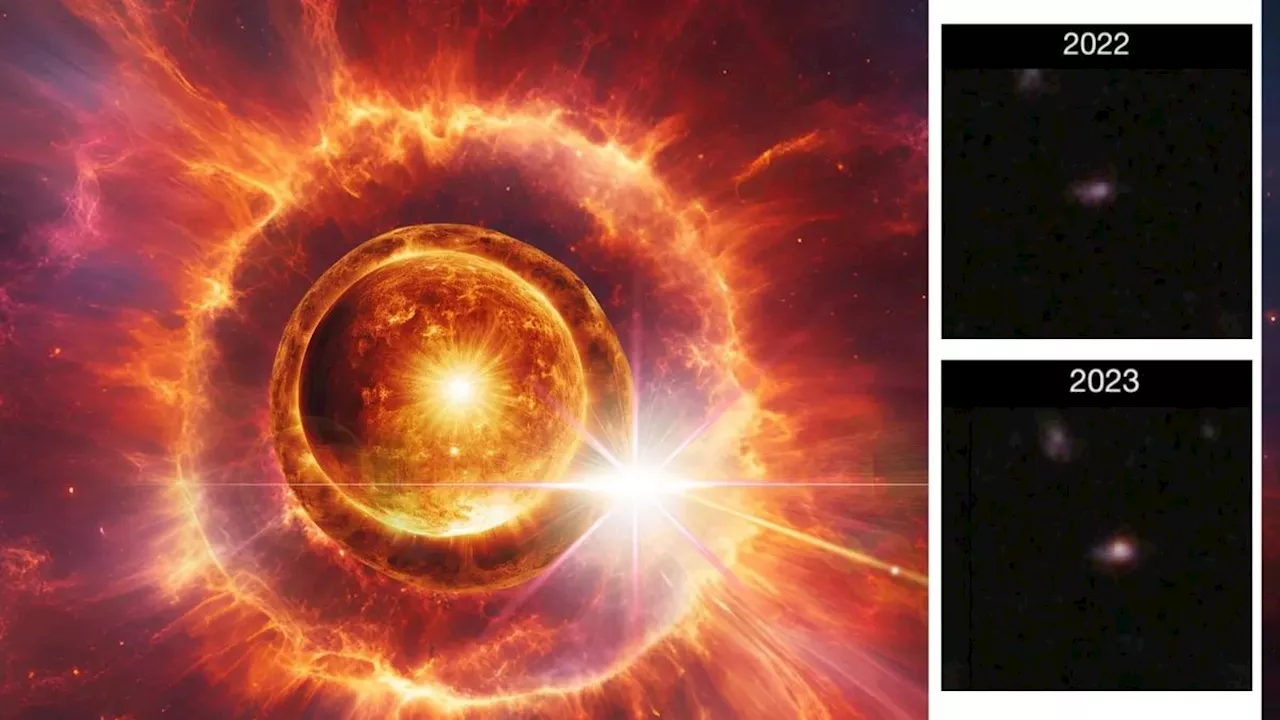The James Webb Space Telescope (JWST) has detected AT 2023adsv, a supernova that exploded approximately 11.4 billion years ago. This discovery provides crucial insights into the nature of the first stars and the evolution of the early universe.
Astronomers have made an astounding discovery, unearthing one of the most distant and, consequently, earliest star-killing supernovas ever observed. This cosmic explosion, designated AT 2023adsv, occurred approximately 11.4 billion years ago in a colossal early galaxy. Detected as part of the JWST Advanced Deep Extragalactic Survey (JADES) program, this supernova holds immense significance for scientists seeking to refine our understanding of stellar life and death in the early universe .
The high-energy blast associated with AT 2023adsv appears to have been exceptionally violent, possibly exceeding the intensity of supernovas observed in more recent epochs within the local universe. This discovery sheds light on the nature of the first stars, which were significantly different from their modern counterparts. These primordial stars were colossal, boasting masses up to 20 times that of our sun, and their explosions were correspondingly cataclysmic. 'The first stars were considerably different than the stars today. They were massive, they were hot, and they had truly gargantuan explosions,' explained David Coulter, a member of the JADES team and a researcher at the Space Telescope Science Institute (STScI), at the 245th meeting of the American Astronomical Society (AAS) in National Harbor, Maryland. 'We don't know how many the JWST will find but we can start to push to the beginning of these first stars and hope to see their explosions.'The early universe was a vastly different place compared to the cosmos we inhabit today. Chemical elements were scarce, with hydrogen and helium dominating the cosmic landscape. Heavier elements, known as 'metals' by astronomers, were essentially non-existent. The initial generation of stars, known as Population III stars, emerged from dense pockets within this primordial soup of hydrogen and helium. These stars ignited the fusion process, transforming lighter elements into heavier ones. However, due to their metal-poor composition, these massive stars had shorter lifespans and their supernova explosions were immensely powerful. These explosions scattered heavy elements into the interstellar medium, enriching the gaseous clouds within galaxies. This, in turn, led to the formation of a second generation of stars, Population II, which were more metal-rich than their predecessors. The cycle continued, birthing subsequent generations of increasingly metal-abundant stars, eventually leading to Population I stars, to which our sun belongs
Supernova JWST Early Universe Stellar Evolution First Stars
United States Latest News, United States Headlines
Similar News:You can also read news stories similar to this one that we have collected from other news sources.
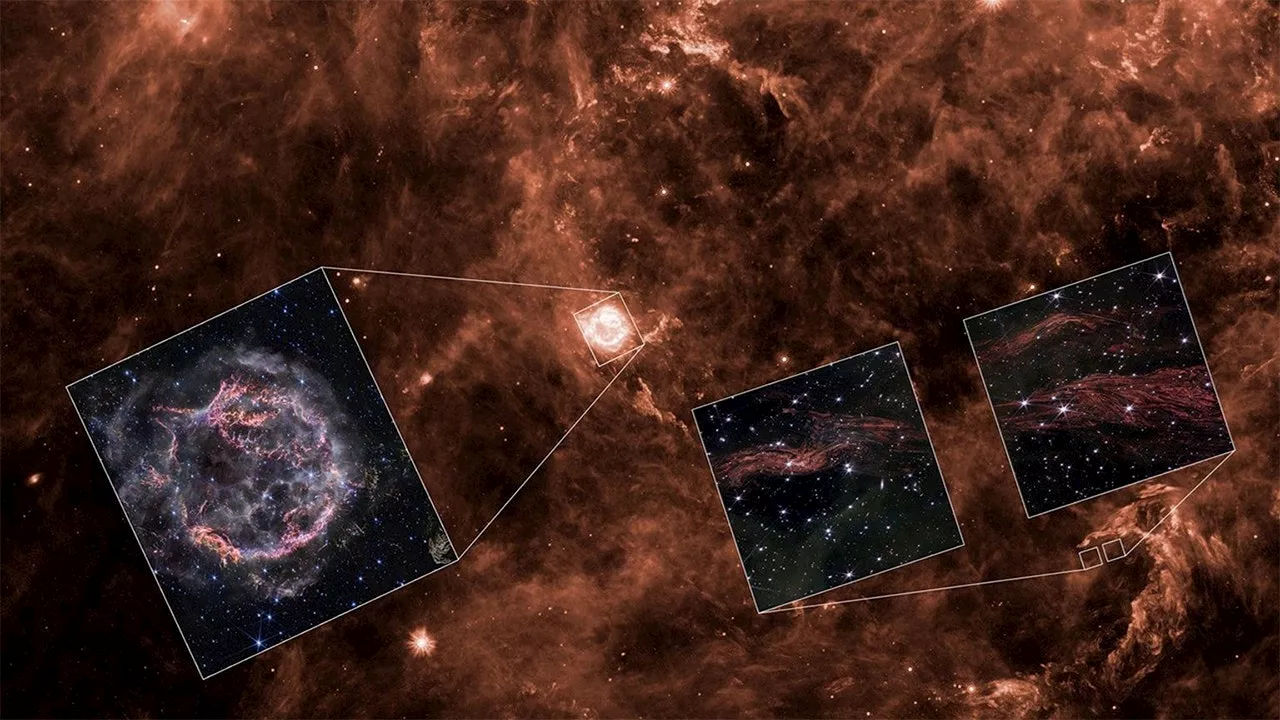 JWST Captures Stunning Images of Earliest Supernova, Revealing Intricate Cosmic StructuresNASA's James Webb Space Telescope (JWST) has captured breathtaking images of one of the earliest supernovas ever observed, revealing intricate features resembling grains and knots found in wood. This celestial phenomenon occurred centuries ago when the core of a massive star collapsed, generating a powerful shockwave that ripped the star apart. Now, scientists are witnessing the aftermath of this stellar explosion as the light pulse reaches interstellar material, causing it to glow. JWST's images reveal stunning details that resemble the intricate patterns found in wood grain, providing astronomers with unprecedented insights into the structure of interstellar dust and gas.
JWST Captures Stunning Images of Earliest Supernova, Revealing Intricate Cosmic StructuresNASA's James Webb Space Telescope (JWST) has captured breathtaking images of one of the earliest supernovas ever observed, revealing intricate features resembling grains and knots found in wood. This celestial phenomenon occurred centuries ago when the core of a massive star collapsed, generating a powerful shockwave that ripped the star apart. Now, scientists are witnessing the aftermath of this stellar explosion as the light pulse reaches interstellar material, causing it to glow. JWST's images reveal stunning details that resemble the intricate patterns found in wood grain, providing astronomers with unprecedented insights into the structure of interstellar dust and gas.
Read more »
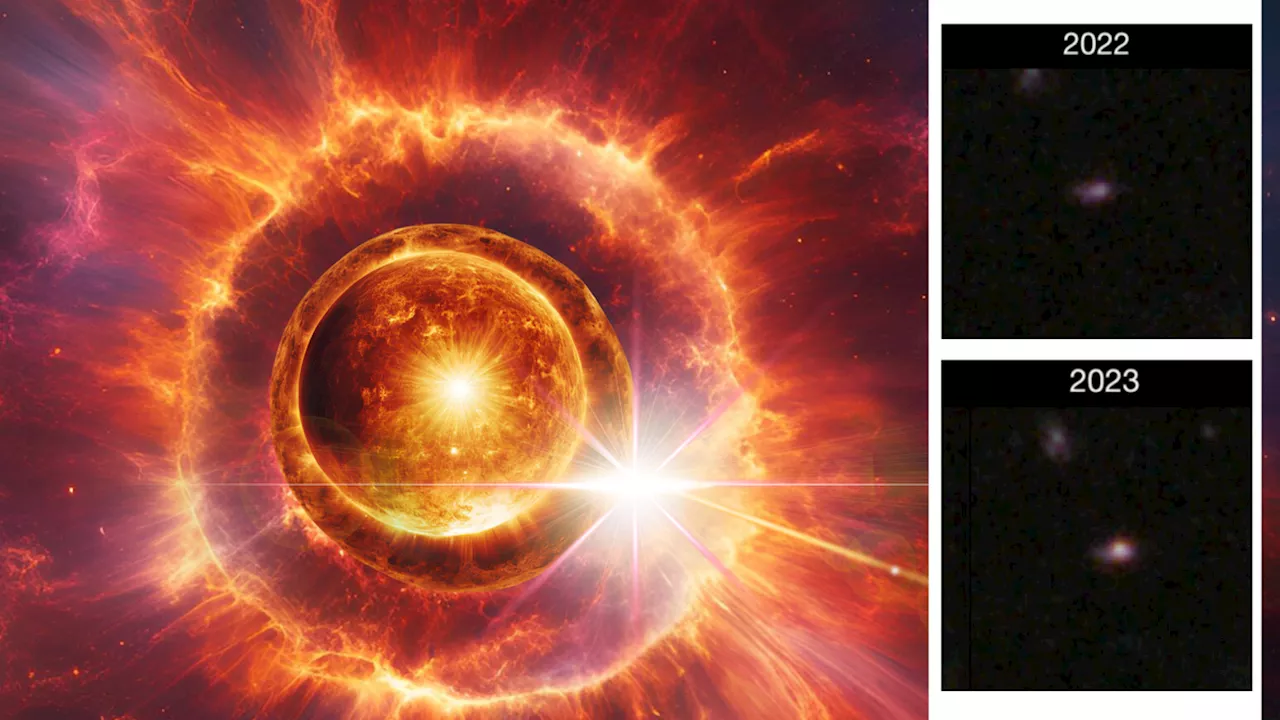 James Webb Space Telescope discovers one of the earliest 'truly gargantuan' supernovas ever seenRobert Lea is a science journalist in the U.K. whose articles have been published in Physics World, New Scientist, Astronomy Magazine, All About Space, Newsweek and ZME Science. He also writes about science communication for Elsevier and the European Journal of Physics. Rob holds a bachelor of science degree in physics and astronomy from the U.K.
James Webb Space Telescope discovers one of the earliest 'truly gargantuan' supernovas ever seenRobert Lea is a science journalist in the U.K. whose articles have been published in Physics World, New Scientist, Astronomy Magazine, All About Space, Newsweek and ZME Science. He also writes about science communication for Elsevier and the European Journal of Physics. Rob holds a bachelor of science degree in physics and astronomy from the U.K.
Read more »
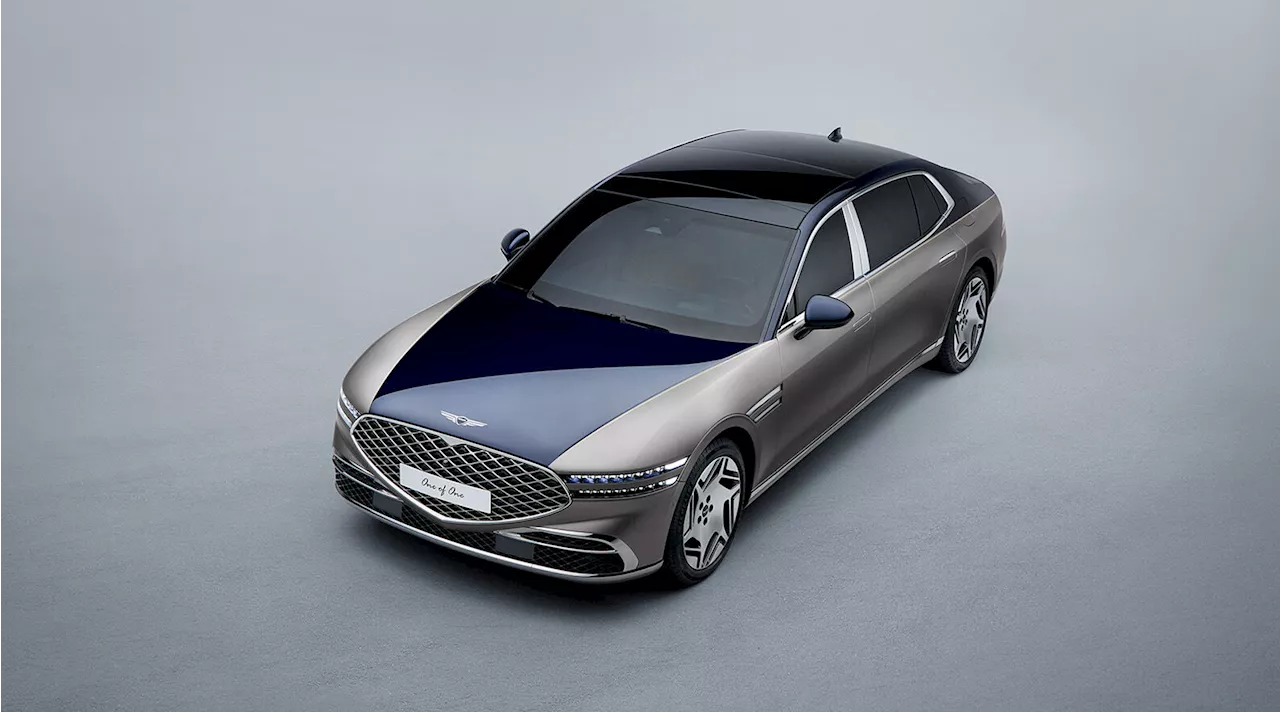 Genesis launches One of One personalization programGenesis buyers can now commission one-off cars through the One of One personalization program.
Genesis launches One of One personalization programGenesis buyers can now commission one-off cars through the One of One personalization program.
Read more »
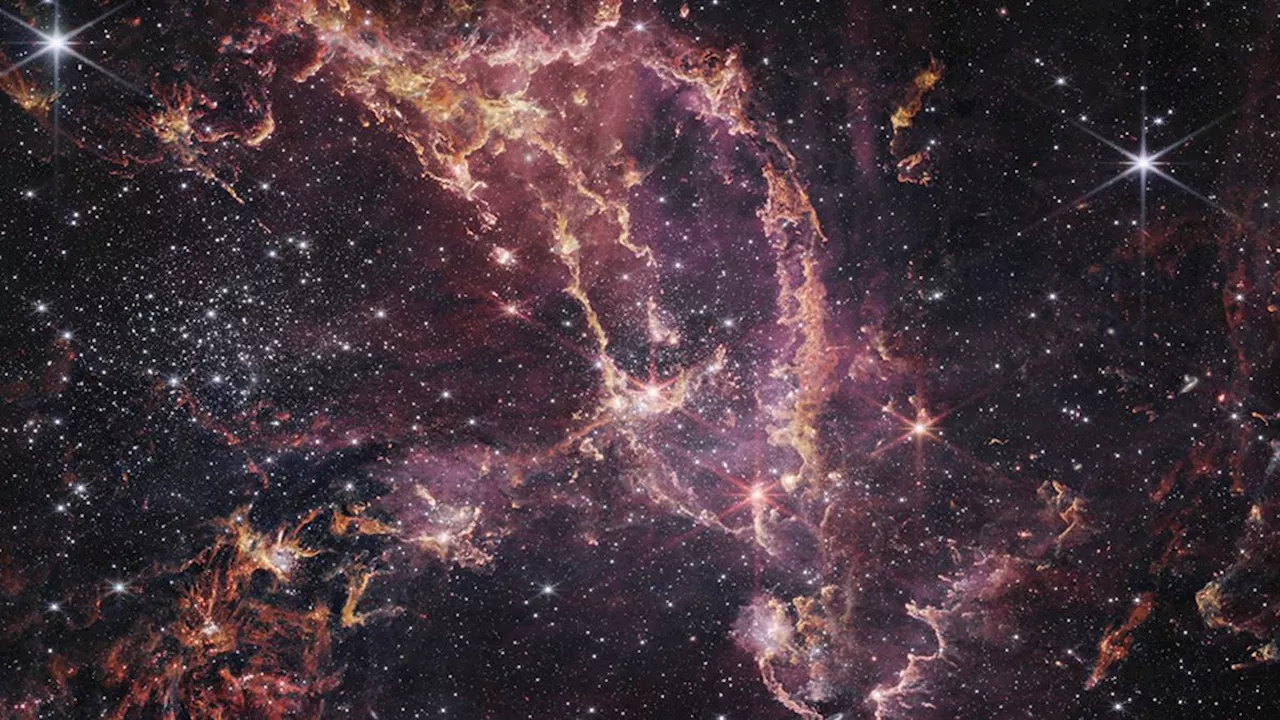 Super Bowl of Astronomy: Thousands Gather to Discuss JWST Discoveries and BeyondThe 245th Meeting of the American Astronomical Society (AAS) is underway in Maryland, bringing together thousands of scientists to share the latest findings from space missions like the James Webb Space Telescope (JWST) and Hubble. The conference, dubbed the 'Super Bowl of astronomy', features presentations on a wide range of astronomical topics, including JWST discoveries, data analysis workshops, and discussions on future missions.
Super Bowl of Astronomy: Thousands Gather to Discuss JWST Discoveries and BeyondThe 245th Meeting of the American Astronomical Society (AAS) is underway in Maryland, bringing together thousands of scientists to share the latest findings from space missions like the James Webb Space Telescope (JWST) and Hubble. The conference, dubbed the 'Super Bowl of astronomy', features presentations on a wide range of astronomical topics, including JWST discoveries, data analysis workshops, and discussions on future missions.
Read more »
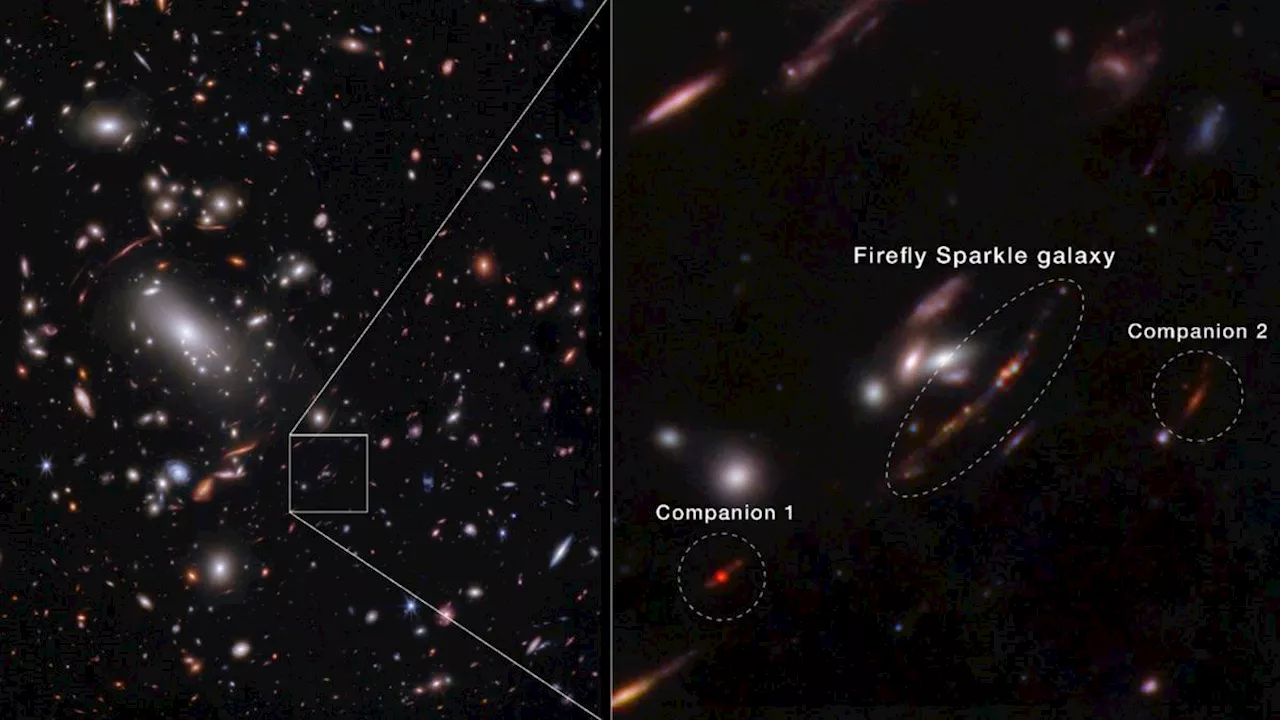 Astronomers Spot Baby Galaxy 'Firefly Sparkle' Using JWSTThe James Webb Space Telescope (JWST) has captured the first image and mass measurement of a baby galaxy resembling the Milky Way, named 'Firefly Sparkle'.
Astronomers Spot Baby Galaxy 'Firefly Sparkle' Using JWSTThe James Webb Space Telescope (JWST) has captured the first image and mass measurement of a baby galaxy resembling the Milky Way, named 'Firefly Sparkle'.
Read more »
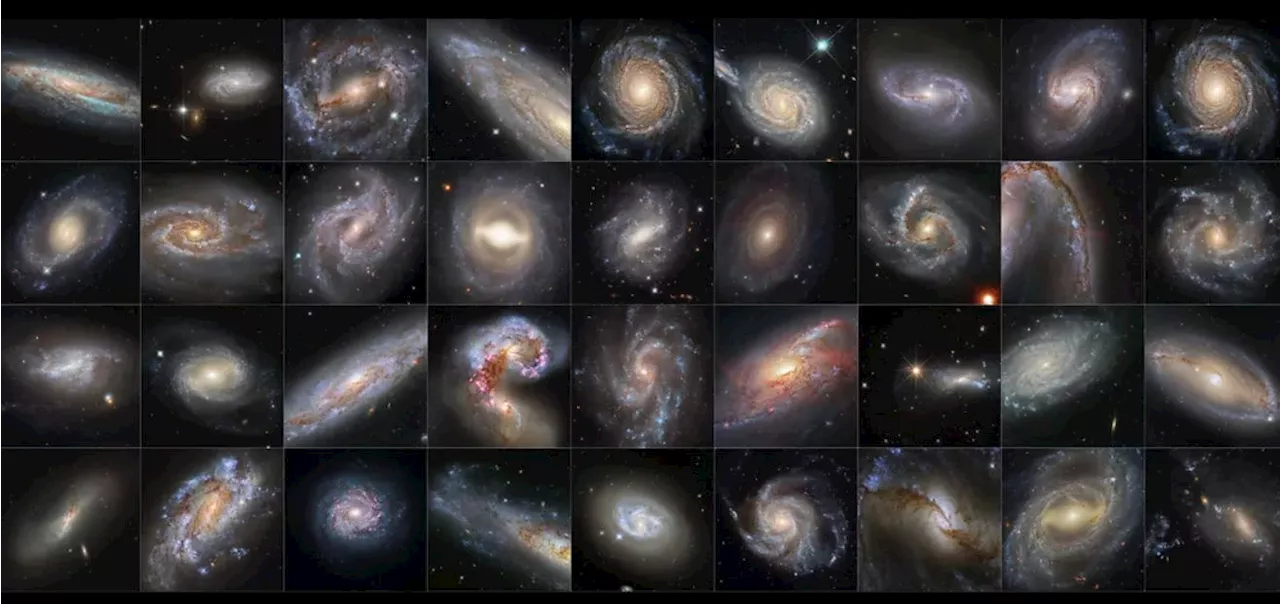 The JWST Looked Over the Hubble's Shoulder and Confirmed that the Universe is Expanding FasterThe JWST double-checked the Hubble's results. It confirms that our Lambda-Cold Dark Matter model is incomplete.
The JWST Looked Over the Hubble's Shoulder and Confirmed that the Universe is Expanding FasterThe JWST double-checked the Hubble's results. It confirms that our Lambda-Cold Dark Matter model is incomplete.
Read more »
